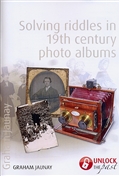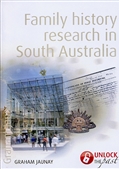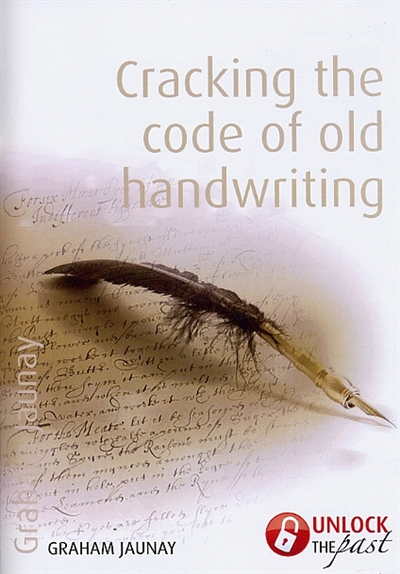You
are receiving this because your address is subscribed at: www.jaunay.com/newsletter.html |
|
 |
| No: 72 |
February 2012
|
|
News February Seminars 19: Coming to grips with FamilySearch, WEA Centre Adelaide 10:00am to 1:00pm 28: Genealogy on the Web (starts 12:30pm) and The new FamilySearch website (start 2:30pm) Mt Barker Library The afternoon concludes at 4:30. 29: Introduction to FH research (over 7 weeks with sessions of 1.5 hrs each), WEA Centre Adelaide, 8:00 to 9:30pm March Seminars 3: Family history on the Web, WEA Centre Adelaide, 10:00am to 1:00pm 17: Goodbye IGI, Fleurieu Peninsula Family History Group, 2:00 to 3:00pm 25: Coming to grips with FamilySearch, WEA Centre Adelaide, 10:00am to 1:00pm 27: Now who could that be? Sorting 19th century photographs, 13th Congress 4:00 to 6:00pm 28:Gentlemen’s mansions and Manning houses (walk), 13th Congress 2:35 to 4:35pm 29:Manifests and embarkation lists—these are two of my favourite things, 13th Congress 4:00 to 6:00pm 30: A storm in a teacup; there’s no room for Irish orphans in Australia, 13th Congress 2:35 to 4:35pm. See the seminar program for more details and bookings. 13th Congress in Adelaide Adelaide Proformat is a sponsor of the 13th Australasian Congress on Genealogy and Heraldry to be held at the Convention Centre 27–31 March. The Congress has a great line up of speakers on a great range of topics. Participants and the general public can visit the associated exhibition. Graham Jaunay will be offering free advice on how to tackle research problems at various times at the exhibition. |
In
this issue: |
|
Graham Jaunay Services
|
| Organising your family history records
You will collect a multitude of documents, artefacts and photographs of all shapes and sizes. The worth of each item needs to be assessed to determine how it is to be appropriately stored. Preservation should be reserved for the unique materials in the first instance and if you are operating on a limited budget. It is important that you arrange safe storage of your material. You need to consider: • family documentation • memorabilia • photographs • research notes This can be quite an expensive exercise and you may need to weigh up the value of the item against the cost of storage. While a birth certificate can be replaced—a photograph or its negative may be unique. Clearly irreplaceable items need more consideration. Devise a storage system that will suit your needs but accommodate your material. 1. In setting up a system consider: • conservation aspect of materials • potential growth in volume of material • the range of shapes and sizes of material 2. If you use a computer, consider the importance of backing up your data. You may still need a hard copy when away from your machine unless you invest in a lap top or pad machine. You will still need to store documents, photos and photocopies even if you invest in a scanner. When buying family history software, consider the potential growth of your collection and buy a program that will accommodate your potential needs. 3. Storage items used: • filing cabinets, tote boxes, cupboards and book shelves • A5, A4 and A3 binders with plastic insert sheets (some will need to be of archival standard for irreplaceable items) • manila folders • Postpak tubes • acid free photo albums • archive boxes Albox is an excellent source for archival storage. Preserving your records Photographs  Ideally photographs should be stored in archival albums that will
not cause them to deteriorate. If you are fortunate enough to have
a nineteenth century album in your possession it may be appropriate
to leave the photographs in situ. They have
lasted all this time intact and should continue to do so. If you have
precious photographs stored in modern albums under self-sticking plastic—remove
them at once. Likewise photos in plastic-sleeve albums purchased from
the supermarket should be removed! Purchase an archival photo album
from Albox. If you decide to use sleeves to store the photographs,
they must be a snug fit. Mounting on acid free board using archival
glue is often the better option when appropriate sleeves cannot be
purchased.
Ideally photographs should be stored in archival albums that will
not cause them to deteriorate. If you are fortunate enough to have
a nineteenth century album in your possession it may be appropriate
to leave the photographs in situ. They have
lasted all this time intact and should continue to do so. If you have
precious photographs stored in modern albums under self-sticking plastic—remove
them at once. Likewise photos in plastic-sleeve albums purchased from
the supermarket should be removed! Purchase an archival photo album
from Albox. If you decide to use sleeves to store the photographs,
they must be a snug fit. Mounting on acid free board using archival
glue is often the better option when appropriate sleeves cannot be
purchased. While recording your photographs take the opportunity to label them on the back. Use a soft pencil for older cardboard backed photographs. Use a special pen for modern photos or preferably attach an acid-free sticker. On the back of each photo record the known details—do not make any guesses—an error could be perpetuated forever! Record—names, place and date of photograph. Number your photographs for a photo index and enter the details in the notes sections of your family charts for quick reference. Cross reference them to the persons in your pedigree index by using the same number. (See newsletter #70) Arthur McCorkell solicitor of Londonderry about 1865 For much more information on photographs including ways to identify and date them see, Graham Jaunay; Solving riddles in 19th century photo albums available from Unlock the Past. There are four major causes of photographic deterioration—environmental, chemical, physical and biological. • Environmental deterioration is usually the result of excessive humidity and/or extremes in temperature and is demonstrated with curled prints, mould, fungus, foxing (blotchy, reddish-brown stains on prints or mounts), negatives sticking to containers or each other and photos sticking to glass frames. High pollution exists in areas where paints, printing inks, lacquers, enamels, varnishes and cosmetics are being used. Near the seacoast, very small amounts of air borne salts may infiltrate into storage areas which not only accelerates chemical degradation, but also encourages the growth of micro-organisms. • Chemical degradation is frequently observed as image fading, discolouration and stains. Photographs will turn a yellowish-brown with inadequate processing techniques. Early photographers were not aware of the consequences of inadequate processing and they did not have the monitoring devices we have today. • Physical deterioration is most prevalent in photographs that have been poorly stored. Some examples of physical deterioration are holes, scratches and spots that are caused from the abrasion of one material against another. Brittle matte board or photographs can snap and create losses in the image area. Glass plates when not handled properly can chip or break. Water can destroy a photograph. • Biological deterioration results because materials contain ingredients such as gelatine and cellulose in paper that are attractive to insects and rodents.  Documents,
papers and artifacts Documents,
papers and artifactsIrreplaceable documents and papers should be treated like photographs and stored carefully and preferably flat. While there are archival albums for photographs, there are fewer such products available commercially for documents and the like. Start by purchasing an A4 and A3 binder with at least three rings to hold the material firmly. (Ideally four ring binders are better but the writer has yet to see an A3 version.) Secondly purchase a range of good quality archival, or at least PVC free, sheet protectors. Include a few A5 and A3 sizes for the smaller and larger valued items. For the easily replaced material and documents, cheaper supermarket sheet protectors are adequate although do try to avoid those hard plastic versions because they are PVC. Wine bottle label Larger items such as old Wills and maps are best stored safely rolled in tubes such as Postpaks. Postpaks are not acid free but in over thirty years the writer has not noted any problems with these as storage containers. Any material already folded should be opened out and stored flat or rolled. Creases in paper are the first sites for irreparable damage to documents. Having an extensive collection of records and artifacts is one thing but apart from storing them appropriately—can you readily find them when you want them? Carefully number each document or item in a consistent place in soft pencil and record that number on the appropriate Family Chart next to the matching event so that it can be quickly found in the future. Next file the document in the right sized binder behind its appropriate Family Chart. If the document or item cannot fit in the binder then an appropriately annotated note detailing its location should be in the binder. For example one of my items is a silver chalice—it cannot be stored in a binder but a note indicating where the item is stored is appropriate. In fact the writer extends this process to material held by other members of the family. Do not forget about your research notes be they in exercise books, loose sheets or on your computer as they represent all your hard work. They should not be undervalued and need a good index which will prove invaluable if you ever have to go back over material to find something you might have overlooked or need to revisit.  
 |
|
| To
unsubscribe send a blank email via the following link using the same
address you subscribed to: newsletter-leave@jaunay.com |